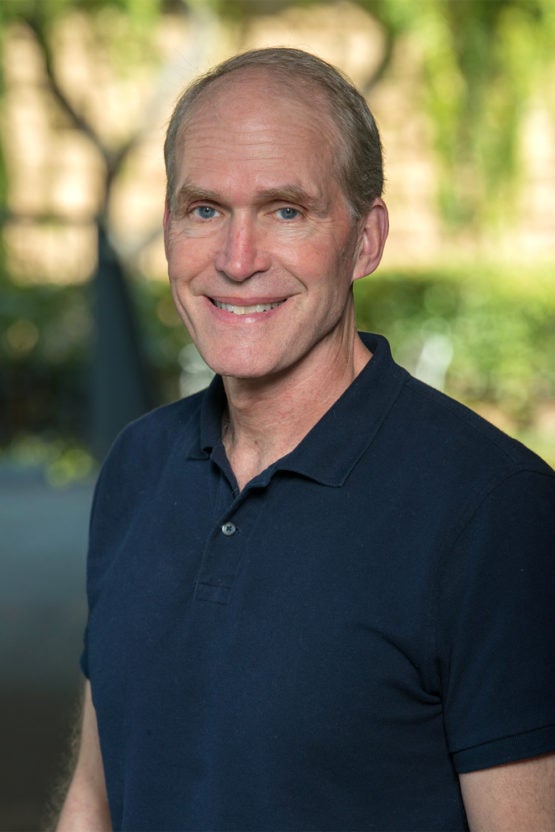May 19, 2020
Stanford researcher envisions energy and environment landscape after COVID-19
Global carbon dioxide emissions are down dramatically in the wake of COVID-19. A new study pinpoints where energy demand has dropped the most, estimates the impact on annual emissions and points the way to a less polluted future.
As people shelter in place to slow the spread of COVID-19, daily carbon dioxide (CO2) emissions have dropped by as much as 17 percent globally, according to a new study by the Global Carbon Project, an initiative led by Stanford University scientist Rob Jackson. Published in Nature Climate Change, the paper compiles government policies and activity data to pinpoint where energy demand has dropped off the most and to estimate the impact on annual emissions.

Rob Jackson (Image credit: Courtesy Rob Jackson)
Jackson, a professor of Earth system science in Stanford’s School of Earth, Energy & Environmental Sciences (Stanford Earth), sees in the study’s findings the outlines of a greener economy and healthier society. Below, he discusses what the current pandemic can teach us about behavior change, kickstarting a recovery and more.
Does the Global Carbon Project’s study on daily declines in CO2 emissions associated with COVID-19 reveal any surprises?
The drop in global emissions we estimate this year will surprise some people in being “only” 4 to 7 percent because shelter-in-place rules are temporary and staggered across different countries. But it will still be the biggest emissions drop since World War II, though for undesirable and unsustainable reasons. More surprisingly, U.S. emissions declined one third for part of April, a shocking drop driven by reduced mobility, manufacturing and electricity demand.
What does history tell us about how past shocks altered fossil fuel emissions?
Financial crises are short-lived. The recession of 2008 reduced CO2 emissions a percent and a half globally for one year. Emissions roared back five percent the next year as if nothing had changed – because it hadn’t, in terms of fossil-fuel infrastructure. By contrast, the oil shocks of the 1970s were specific to our fossil-fuel use and, therefore, more transformative. They led to everything from smaller cars to the birth of the solar and Alaskan oil industries.
Global organizations, such as the IMF and UN, have called for a post-pandemic recovery that tackles the climate-change crisis. How would you sell that idea to the average person?
Almost $50 billion of stimulus funding after the 2008 recession helped transform wind and solar power and energy conservation. We’re still reaping the benefits today from green power, historically cheap wind and solar contracts and a clean-energy industry that employs three million Americans. We have the same chance to reshape transportation now. We could start by freeing up the $40 billion in low-interest loans currently idled in the Department of Energy’s clean energy and advanced vehicle loan programs.
How might this pandemic affect people’s attitudes and behaviors related to emissions-producing activities?
COVID-19 may change commuting and transportation permanently. Cities from Milan to Seattle are closing miles of streets to traffic permanently and opening them to pedestrians and bicyclists. Telecommuting, even part-time, might be the new normal. Traffic congestion has vaporized. Electric cars are fast and can be fossil-free, changing a sector of the economy that’s been hard to decarbonize.
Underprivileged communities are more vulnerable to COVID-19 and climate change impacts. What can we learn from this, and how should it inform our recovery strategy in terms of emissions?
Air pollution weakens hearts and lungs and makes the virus stronger. People of color and the poor are dying disproportionately from COVID-19. They also live closer to coal-fired power plants and car-heavy freeways – the two biggest sources of air pollution that kill hundreds of thousands of Americans a year. Clean power coupled with electric cars could give everyone clean air without sheltering at home.
What has COVID-19 shown you about the environment?
People marvel at how quickly the air cleared when we stopped driving. My son in Los Angeles called and said, “Dad, the skies are blue!” The environment is resilient, and people are too. Good things may come from COVID-19.
Read Jackson’s related opinion piece – “COVID-19 Could Permanently Transform Transportation” – in Scientific American.
To read all stories about Stanford science, subscribe to the biweekly Stanford Science Digest.
Jackson is Stanford’s Michelle and Kevin Douglas Provostial Professor and a senior fellow at the Precourt Institute for Energy and the Stanford Woods Institute for the Environment.
-30-
|